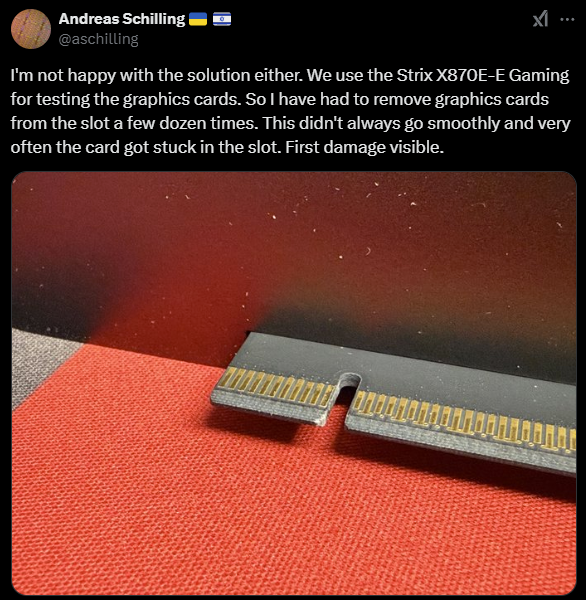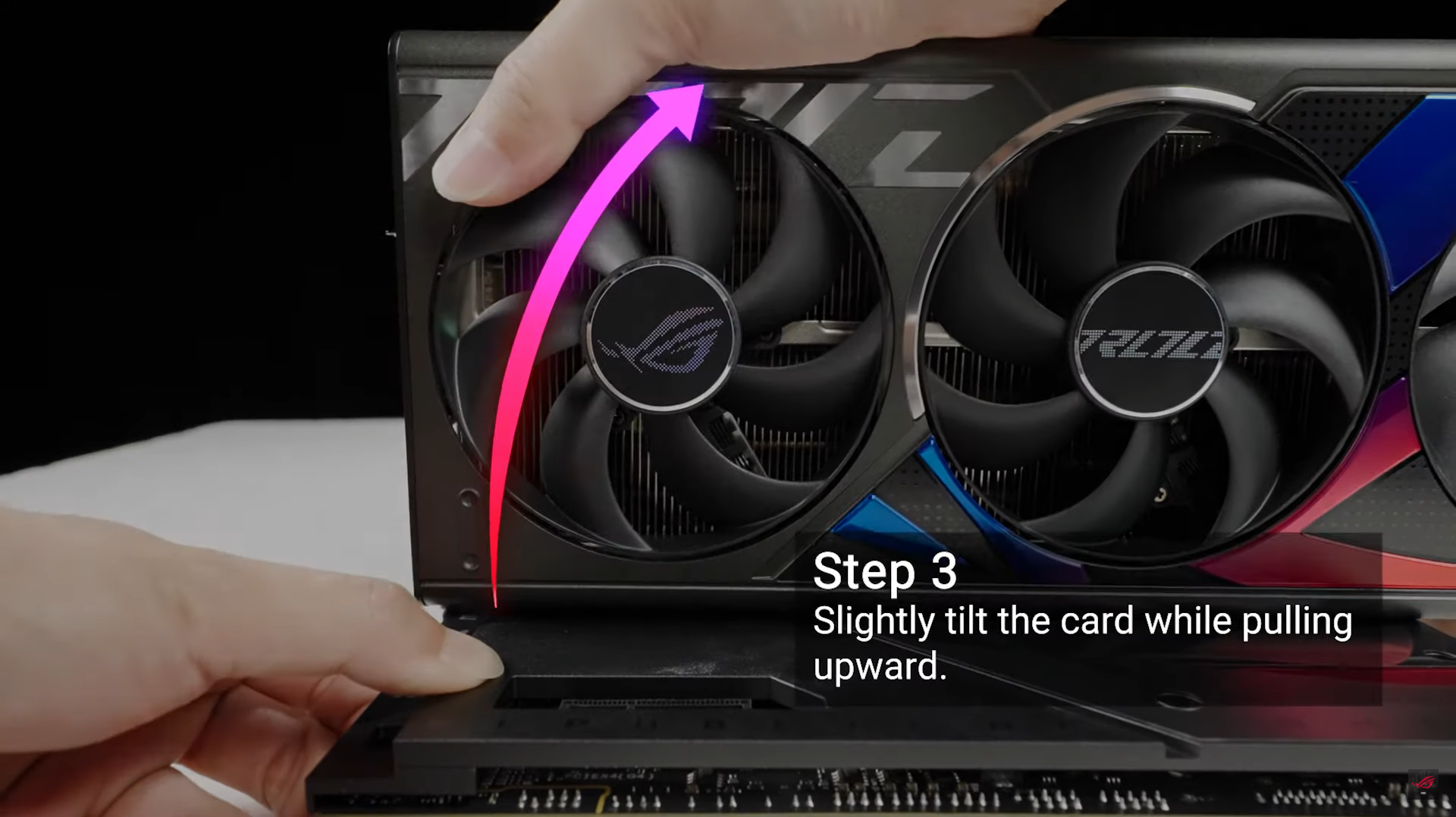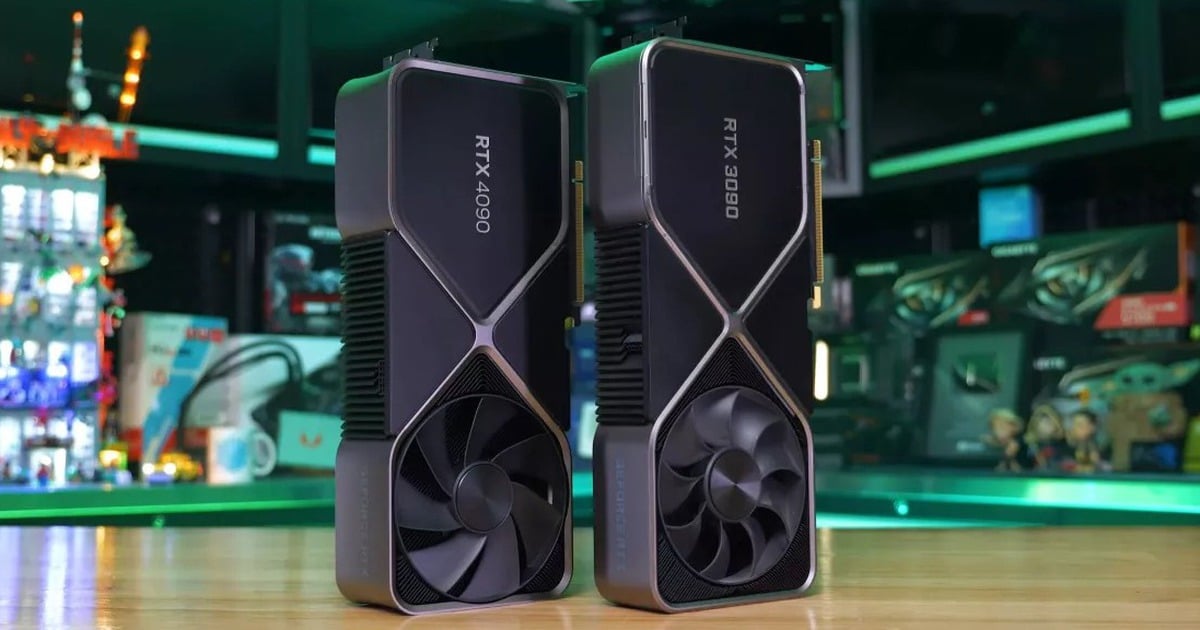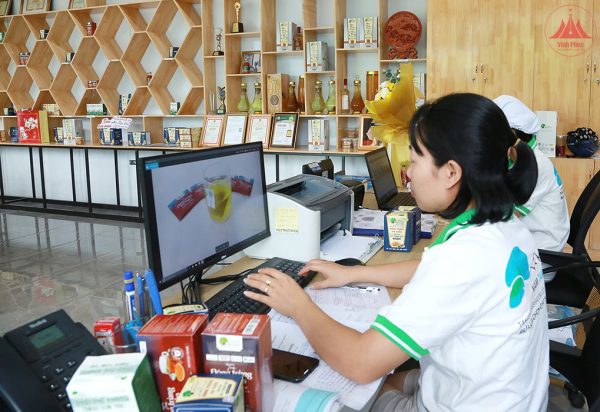According to TechSpot , Asus is facing concerns from users about the Q-Release Slim mechanism introduced on AMD X800 and Intel Z800 motherboards. This is a solution to eliminate the usual button or lever on the PCIe slot, making it easier to install and remove graphics cards (GPUs). However, many users say that this mechanism risks scratching or damaging the gold connection pins on the GPU, especially during frequent installation and removal.

Image shows GPU pins damaged when using Q-Release Slim mechanism
PHOTO: SOCIAL NETWORK SCREENSHOT X
A video on the Bilibili platform clearly illustrates this issue, with the Q-Release Slim mechanism chipping off the gold connector pins of the graphics card. A representative of Hardware Luxx also shared on social network X a photo of his GeForce RTX 5090 that suffered similar damage after repeatedly removing and installing the card during performance tests.

The Q-Release Slim mechanism allows users to remove the GPU from the motherboard faster but can also cause damage to the connection pins.
PHOTO: YOUTUBE ROG GLOBAL SCREENSHOT
Asus’ Q-Release Slim mechanism eliminates the need to press a lever at the end of the PCIe slot, which is often difficult to reach when using large GPUs. Instead, users simply hold the motherboard, tilt the GPU slightly, and pull it straight toward the I/O bracket. However, the lack of a fully locked mechanism during installation seems to increase the risk of the connector pins being scratched or misaligned.
Asus isn’t the only one looking to improve PCIe slot design. MSI has also introduced a Q-Release system for the M.2 slot on its Z800 motherboards. Instead of using a small, awkward screw, this system allows users to lock the SSD with a simple push of a button. Meanwhile, Asus has implemented a similar mechanism with a latch and slider to support 2280 and 2230 SSDs.
Despite receiving numerous reports from users, Asus has yet to provide a concrete solution to fix the problem. At this time, the company has not revealed whether it will return to the old mechanism or develop a new solution for upcoming motherboards.
Source: https://thanhnien.vn/co-che-thao-lap-moi-tren-bo-mach-chu-asus-co-nguy-co-lam-hu-hai-gpu-185250125232745775.htm




![[Photo] More areas of Thuong Tin district (Hanoi) have clean water](https://vstatic.vietnam.vn/vietnam/resource/IMAGE/2025/4/29/55385dd6f27542e788ca56049efefc1b)


![[Photo] Prime Minister Pham Minh Chinh and Japanese Prime Minister Ishiba Shigeru visit the National Museum of History](https://vstatic.vietnam.vn/vietnam/resource/IMAGE/2025/4/29/93ae477e0cce4a02b620539fb7e8aa22)






















![[Photo] Prime Minister Pham Minh Chinh and Japanese Prime Minister Ishiba Shigeru attend the Vietnam - Japan Forum](https://vstatic.vietnam.vn/vietnam/resource/IMAGE/2025/4/29/fc09c3784d244fb5a4820845db94d4cf)
![[Photo] Prime Minister Pham Minh Chinh receives Cambodian Minister of Commerce](https://vstatic.vietnam.vn/vietnam/resource/IMAGE/2025/4/28/be7f31fb29aa453d906df179a51c14f7)



































































Comment (0)